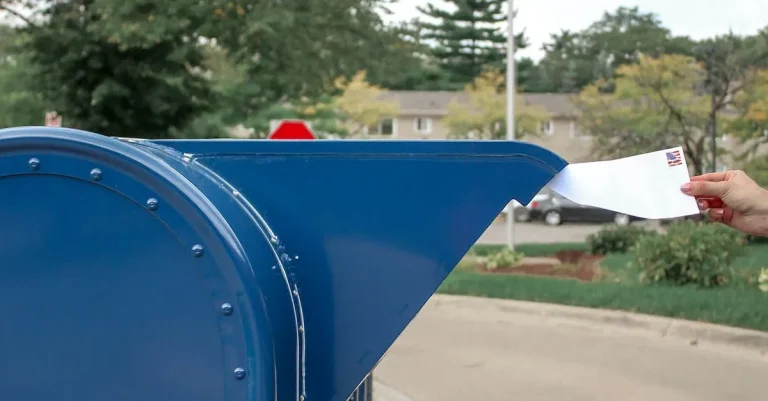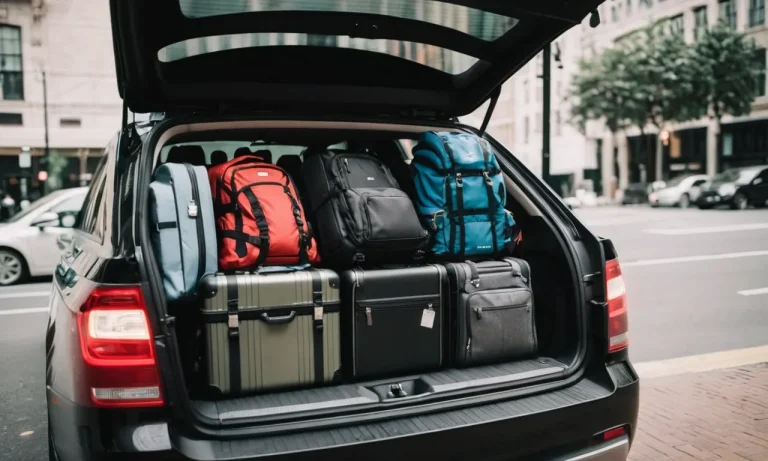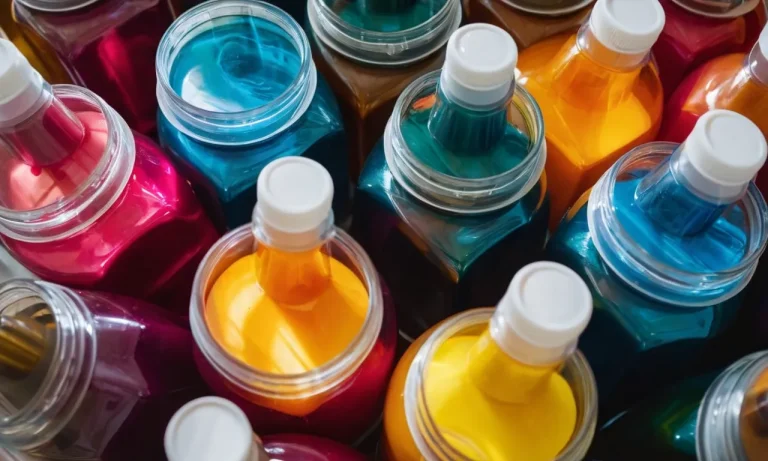Your birth certificate is one of the most important identification and proof-of-citizenship documents you possess.
To protect it from wear and tear, you may consider laminating it to keep it safe. But is laminating your birth certificate allowed?
Here’s a quick answer: Technically no, you should not laminate your original birth certificate. Government agencies advise against lamination because it can damage the document and cause issues verifying its authenticity.
In this comprehensive guide, we’ll cover laminating birth certificates in detail: whether it’s allowed, risks and downsides, alternatives for document protection, and tips for proper storage and handling.
Is Laminating Your Birth Certificate Legal?
When it comes to preserving important documents like birth certificates, many people consider laminating them for added protection. However, the legality of laminating a birth certificate is a topic of debate.
While some may argue that laminating is a practical way to safeguard the document, others believe it can have legal implications.
It’s important to understand the potential consequences before making a decision.
Most Government Agencies Advise Against It
Most government agencies, such as the Department of State, the Social Security Administration, and the Department of Homeland Security, advise against laminating birth certificates.
They recommend keeping the original document in a safe place and making certified copies for everyday use.
Laminating the birth certificate may make it difficult to verify its authenticity, especially if the laminate starts to deteriorate over time.
Additionally, government agencies often require certified copies of birth certificates for official purposes, such as obtaining a passport or applying for government benefits.
Laminating the original document could make it void or ineligible for such applications.
Can Void Certificates or Cause Verification Issues
Laminating a birth certificate can potentially void the document. Some states explicitly state that any alterations or modifications to a birth certificate, including lamination, render it invalid.
This means that if you need to present your birth certificate for legal or official purposes, it may not be accepted if it has been laminated.
Furthermore, laminating a birth certificate can cause issues with verification.
The laminate may obscure important details, such as seals, signatures, or stamps, making it difficult for authorities to authenticate the document.
This can lead to delays or even denials when trying to prove your identity or citizenship.
Original Should Not Be Altered or Damaged
Birth certificates are vital records that establish an individual’s identity and citizenship. As such, it is recommended to keep the original document in its unaltered state.
Alterations, including lamination, can raise doubts about the authenticity of the birth certificate and may cause unnecessary complications.
Instead of laminating the original birth certificate, consider other methods of preserving it.
Store it in a protective sleeve or a secure folder, and keep it in a safe place, such as a fireproof box or a safety deposit box.
If you need to carry a copy with you, make sure it is a certified copy obtained from the issuing authority.
Risks and Downsides of Laminating
Laminating your birth certificate may seem like a practical way to protect this important document from wear and tear.
However, there are several risks and downsides to consider before you make this decision.
Heat and Pressure Can Distort or Discolor
One of the main risks of laminating your birth certificate is that the heat and pressure involved in the lamination process can distort or discolor the document.
Birth certificates are often printed on sensitive paper, and the application of heat can cause the ink to smudge or fade.
Additionally, the pressure applied during lamination can cause the paper to warp or ripple, resulting in a less-than-perfect appearance.
This can be problematic if you ever need to provide a copy of your birth certificate for legal or official purposes.
Difficult to Remove Without Damaging Document
Once your birth certificate is laminated, it can be challenging to remove the laminate without causing damage to the document.
If you ever need to replace or update your birth certificate, the laminated version may not be accepted as a valid form of identification.
The process of removing the laminate can also leave adhesive residue or tear the paper, further compromising the integrity of the document.
It’s worth noting that many government agencies and organizations specifically state that laminated birth certificates are not accepted as valid proof of identity.
If you plan on using your birth certificate for official purposes, such as obtaining a passport or driver’s license, it’s advisable to keep the document in its original, unaltered form.
Can Obscure Security Features and Signatures
Birth certificates often contain security features, such as watermarks, holograms, or special seals, that help verify their authenticity.
Laminating the document can obscure these features, making it difficult for authorities to verify its legitimacy.
Additionally, signatures on the birth certificate, such as those of the registrar or the parents, may also be hidden or distorted by the lamination process.
According to the U.S. Department of State, a laminated birth certificate may not be accepted as proof of citizenship when applying for a passport.
This is because the lamination can raise concerns about the document’s authenticity and make it more susceptible to forgery.

Alternatives for Protecting Your Birth Certificate
When it comes to safeguarding your birth certificate, there are several alternatives that you can consider.
Each option offers its own advantages and it’s important to choose the one that best suits your needs.
Make Certified Copies to Carry Instead
If you find yourself needing to frequently present your birth certificate, it might be wise to make certified copies to carry with you instead of risking damage to the original document.
Certified copies are legally valid and can be obtained from the issuing authority.
These copies are usually accepted for identification purposes, so you can keep your original birth certificate safe at home.
Making certified copies of your birth certificate is a relatively simple process.
You can contact the vital records office in the state where you were born for guidance on how to obtain certified copies.
It’s important to note that there may be a small fee associated with this service.
Store Original in Protective Sleeve
If you prefer to keep the original birth certificate, storing it in a protective sleeve is a great option to prevent damage from wear and tear.
Protective sleeves, made from materials like acid-free plastic or archival paper, shield your birth certificate from dust, moisture, and other potential hazards.
You can find protective sleeves specifically designed for birth certificates at office supply stores or online retailers.
Make sure to choose a sleeve that fits the dimensions of your birth certificate to ensure maximum protection.
Use Document Camera for Digital Copy
For those who prefer to have a digital copy of their birth certificate, using a document camera can be an excellent solution.
Document cameras are devices that capture high-resolution images of physical documents and convert them into digital files.
By using a document camera, you can create a digital copy of your birth certificate that can be easily stored on your computer or cloud storage.
This provides an additional layer of protection in case the physical document is lost or damaged.
Document cameras are widely available online and can be purchased at affordable prices.
Make sure to choose a model that offers high image quality and easy connectivity to your preferred digital storage method.
Tips for Handling and Storing Your Birth Certificate
Your birth certificate is an important document that serves as proof of your identity and citizenship.
It is crucial to handle and store it properly to ensure its longevity and prevent any damage. Here are some tips to keep in mind:
Keep in a Cool, Dry Place Out of Direct Light
Exposure to excessive heat, moisture, and direct sunlight can cause your birth certificate to deteriorate over time. It is best to store it in a cool, dry place, away from any potential sources of damage.
Avoid keeping it in areas such as attics, basements, or near windows where temperature and humidity fluctuations are common.
Consider Safe Deposit Box or Fireproof Safe
To provide maximum protection for your birth certificate, consider storing it in a safe deposit box or a fireproof safe.
These secure storage options can safeguard your document from theft, loss, or damage due to fire or other disasters.
Remember to keep the key or combination in a secure place and inform a trusted family member or friend about its location.
Handle Gently to Avoid Bends, Folds, or Tears
When handling your birth certificate, it’s important to be gentle and careful to avoid any bends, folds, or tears. Hold it by the edges and avoid applying excessive pressure or force.
If you need to make a copy of your birth certificate, consider using a scanner instead of folding or bending the original document.
By following these tips, you can ensure the safety and longevity of your birth certificate, allowing you to access it whenever necessary without any issues.
Conclusion
While laminating your birth certificate may seem like a good protection method, it can actually damage the document and cause authentication headaches.
Instead, handle the original with care and utilize safer alternatives like certified copies or protective sleeves.
Following proper storage and handling procedures will keep your certificate in pristine, verifiable condition for years to come.






